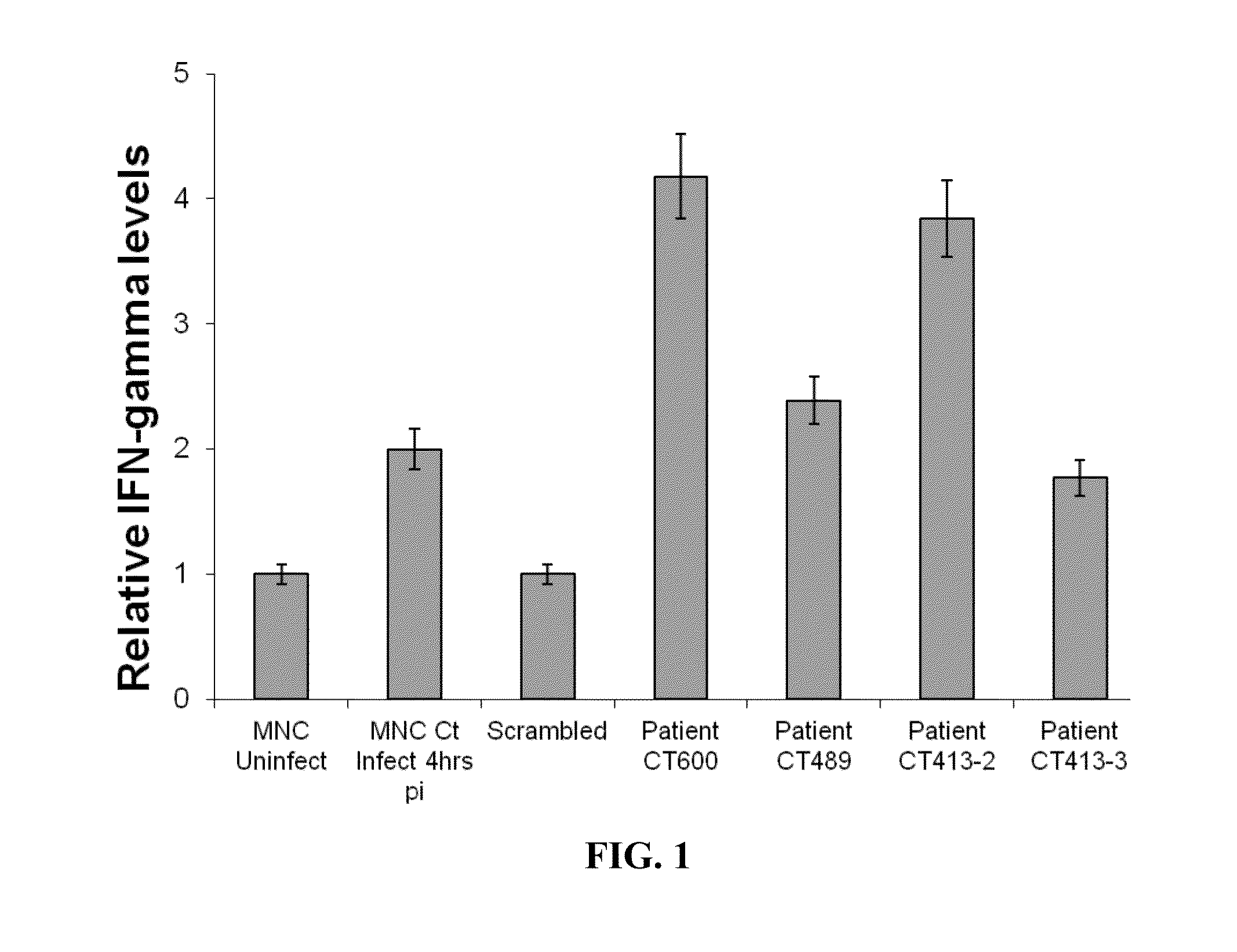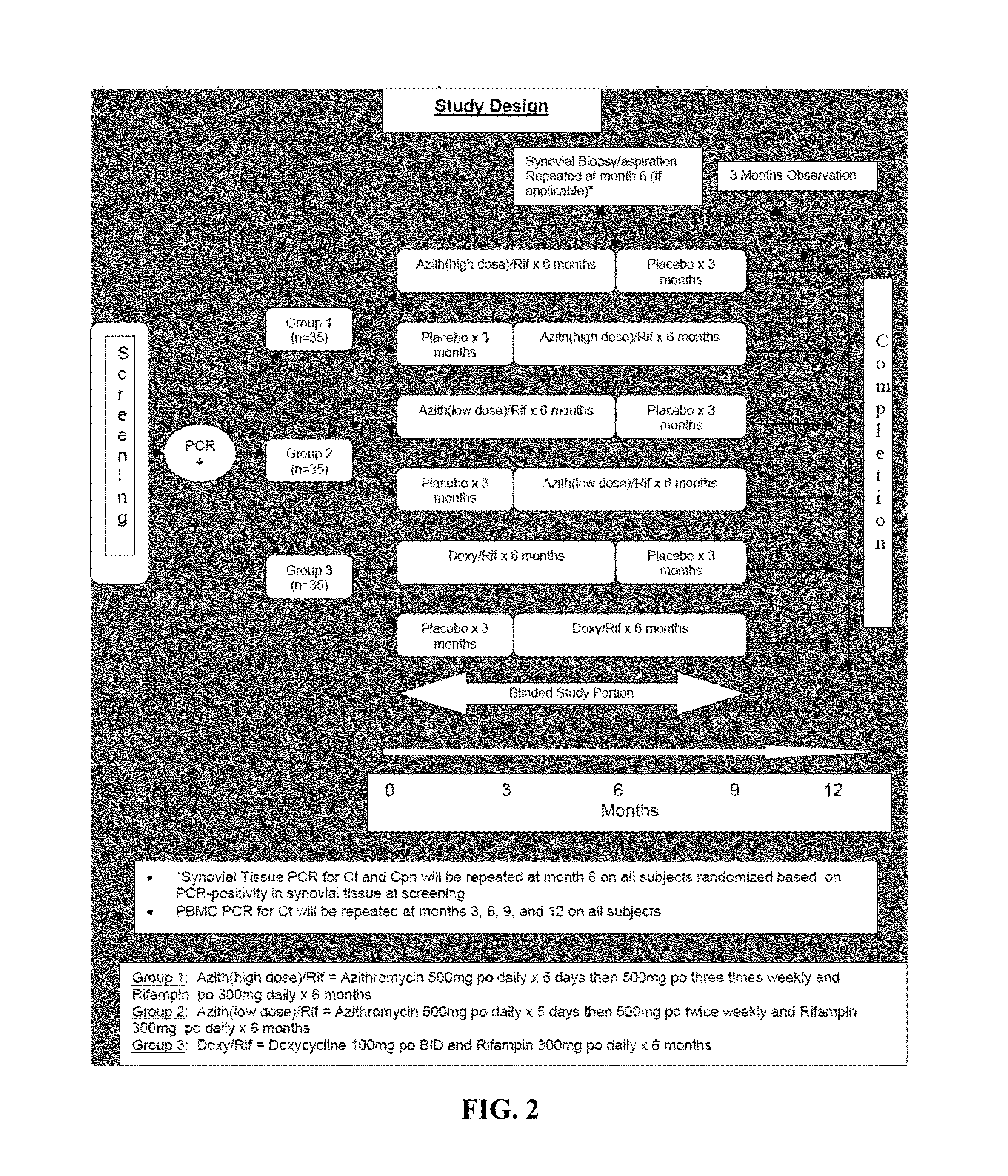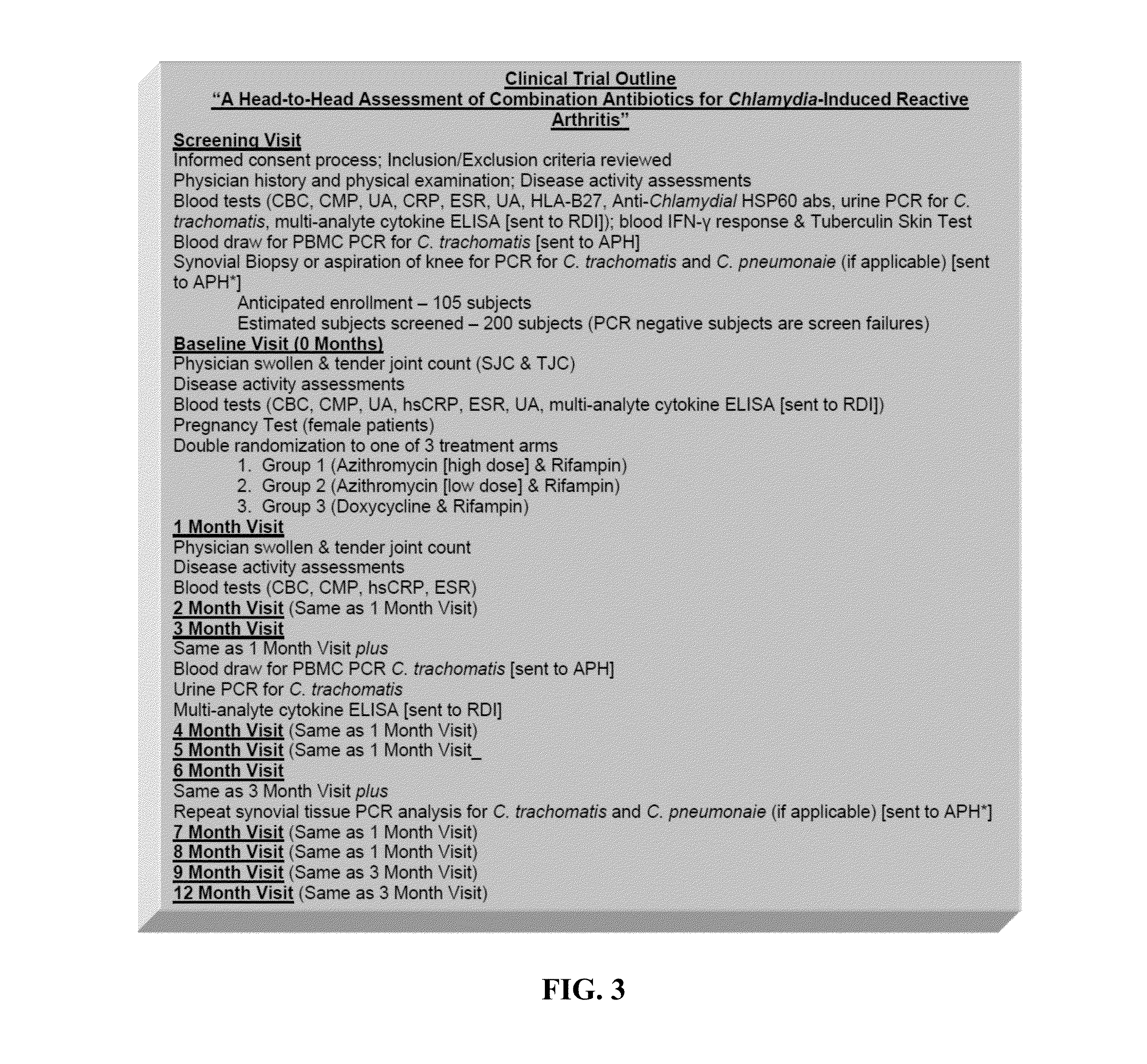Interferon-Gamma Response as a Diagnostic Test for Persistent Chlamydial Infections
a technology of interferon and gamma, which is applied in the field of interferon-gamma response as a diagnostic test can solve the problems of inability to validate and commercially available diagnostic tests for persistent chlamydial infections, difficult application of invasive procedures in everyday practice, and several limitations of pcr-based diagnostic tests. achieve the effect of non-invasive and sensitiv
- Summary
- Abstract
- Description
- Claims
- Application Information
AI Technical Summary
Benefits of technology
Problems solved by technology
Method used
Image
Examples
example 1
Generation of Peptide Antigens for Diagnosis of Persistent Chlamydia Trachomatis Infection
[0144]This Example illustrates methods for generating peptide antigens useful for diagnosing persistent Chlamydia trachomatis infection. In an embodiment, peptide antigens are derived from the HSP-60 homolog encoded by Ct604, which is significantly up-regulated during persistent infection both in vivo and in vitro. Preferably, the peptides are of 8 to 20 amino acids in length. Preferably, the peptides are not derived from regions of the Ct604-encoded homolog that have similar sequences to that of the Ct110-encoded homolog (SEQ ID NO:2). Regions of local similarity between sequences can be determined by conventional techniques such as the basic local alignment search tool (BLAST). During the course of designing candidate peptide antigens, one need not consider whether the Ct604-encoded HSP-60 homolog shares any sequence similarity to that of the Ct755-encoded homolog, which is essentially unexpr...
example 2
Determination of the Cut-Off Value
[0147]This Example illustrates a preferred embodiment for determining the cut-off value indicative of persistent Chlamydial infection. Specifically, whole blood samples collected from individuals are subject to the PCR assay that identifies the presence of C. trachomatis DNA (such as C. trachomatis omp1 and 16S rRNA). The sample with detectable level of C. trachomatis DNA is considered as PCR-positive, which indicates that the individual has persistent Chlamydial infection. The sample without detectable level of C. trachomatis DNA is considered as PCR-negative, which indicates that the individual does not have persistent Chlamydial infection. The blood samples are incubated with peptide antigens of the present invention, and IFN-γ levels are determined. The cut-off value is determined based on the IFN-γ level that distinguishes the PCR-positive v. PCR-negative samples.
[0148]In a further embodiment, the correlation between the level of IFN-γ response...
example 3
Absence of Chlamydia DNA in Urine Samples of Patients with Persistent Chlamydial Infection
[0149]This Example reveals that urine samples of patients with persistent Chlamydial infection contain no detectable level of Chlamydia DNA. Briefly, urine samples of patients with Chlamydia-induced ReA are subject to PCR analysis and no detectable Chlamydia DNA is determined. This reveals that during persistent infection such as Chlamydia-induced ReA, arthritogenic Chlamydial serovars completely vacate the genital area, which is the initial site of infection, and migrate into distant sites such as ocular tissues, synovial tissues and blood.
PUM
| Property | Measurement | Unit |
|---|---|---|
| time | aaaaa | aaaaa |
| time | aaaaa | aaaaa |
| time | aaaaa | aaaaa |
Abstract
Description
Claims
Application Information
 Login to View More
Login to View More - R&D
- Intellectual Property
- Life Sciences
- Materials
- Tech Scout
- Unparalleled Data Quality
- Higher Quality Content
- 60% Fewer Hallucinations
Browse by: Latest US Patents, China's latest patents, Technical Efficacy Thesaurus, Application Domain, Technology Topic, Popular Technical Reports.
© 2025 PatSnap. All rights reserved.Legal|Privacy policy|Modern Slavery Act Transparency Statement|Sitemap|About US| Contact US: help@patsnap.com



